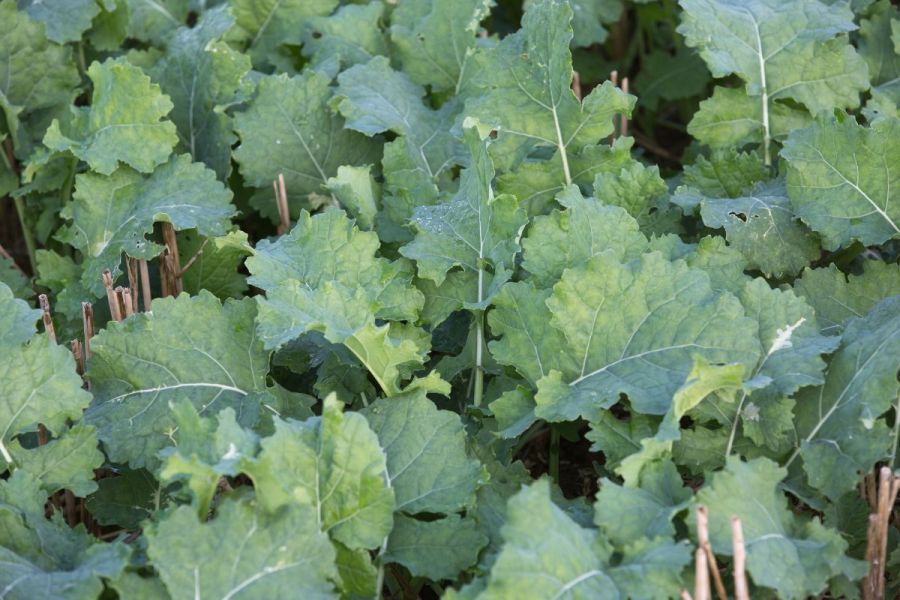Establishment of oilseed rape has been pushed earlier and earlier as growers seek to overcome adult cabbage stem flea beetle, but there’s more to it than just moving the date. CPM explores the implications of drilling early and what should be considered to do it successfully.
“OSR has everything against it, but it’s a cracking break crop.”
By Melanie Jenkins
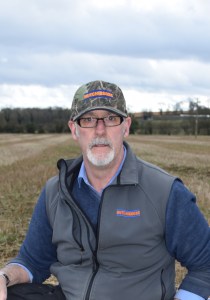
One reason drilling dates have been brought forward is because of a move in the autumn rainfall pattern, says Dick Neale.
Between combines rolling, grounds works and drilling for next season, all of which are dictated by weather windows, the summer on farm can be hectic. So why are some oilseed rape growers choosing to drill in early August or even at the tail end of July?
Primarily, the reason behind a move to earlier drilling is adult cabbage stem flea beetle feeding, says Dick Neale of Hutchinsons. “This has been the driver, but if we step back, it comes down to the reasons behind why we’ve had issues with CSFB. In my view, this is because of how often OSR appeared in rotations and because the area grown went from 450,000ha to 750,000ha, and this just wasn’t sustainable.
“Between becoming too reliant on the crop and likely growing too many closely related varieties, we were chasing autumn diseases and summer pests, plus we were getting resistance to our limited range of insecticides. CSFB issues were an inevitable ending really and I don’t think the withdrawal of neonicotinoids was ultimately the issue.”
So now there’s a lot of nervousness about drilling at the traditional timing and losing a crop to CSFB, says Richard Williams of Bayer. “The aim with earlier drilling is to beat the CSFB migration into crops, but when deciding to do this, there are lots of other factors to consider and these all revolve around the crop behind taken off ahead of the OSR and soil moisture.
“A lot of work has to be done once the previous crop has been combined before you can drill [in a tillage system] and there’s often a wheat harvest around the corner. Further considerations include soil conditions and whether subsoiling is required to correct any compaction issues,” he warns.
“This all has to be organised from the start as there’s likely to be a tight turn around, so plan your equipment, any companion crops, and variety choice.”
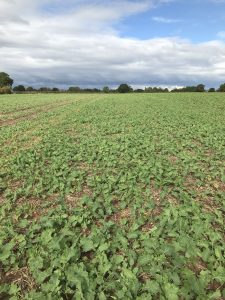
Some varieties are better suited to earlier drilling as they’re a bit slower to get away.
Some varieties are better suited to earlier drilling as they’re a bit slower to get away, says Richard. “Drilling a very vigorous variety too early would result in excessive biomass, so there’s a bit of a Catch-22 here. We want a crop that gets up and grows away, but only to a manageable level.
“And then there’s the issue where you might plan to drill early, but conditions don’t accommodate this and you could have to change variety last minute. It’s worth being prepared for this scenario and even if you’re on a small acreage, have a few varieties in mind.”
To early drill successfully, Dick believes growers have to get everything right. “This means generally selecting a hybrid variety with high yields and turnip yellows virus resistance (TuYV). Although there are some good conventional varieties, hybrids are better because of their autumn and spring vigour.”
But some growers still prefer conventionals, says Richard. “However, when compared with hybrids, there’s a difference in how conventionals establish, plus variable levels of uniformity and a slight yield penalty. So personally, if I was going to drill early, I’d want a guarantee.”
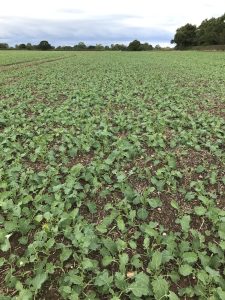
Moisture is king when it comes to drilling OSR and if it’s too dry, it’s often not worth planting it.
And guarantees are another benefit of hybrids, he adds. “There’s an initial spend on a hybrid variety, but this pays for itself in other ways, from the genetic package – with TuYV resistance in some cases – to improved vigour, better uniformity and pod shatter resistance. Investing in the genetics helps guarantee a return. The aim is to keep the cost down and with hybrids a number of firms have establishment schemes as insurance in case things go wrong.”
Richard also advises growers to be organised and order their seed early to avoid disappointment. “Ordering varieties with different growing characteristics can help with delayed drill timings and be an aid to de-risking growing the crop.”
But as much as early drilling can help OSR get away from CSFB, Dick points out that it doesn’t actually remove the food source from the adult beetles. “The pest is still feeding on the plants, it’s just there’s less impact than there would be if the crop was only at cotyledon stage. Plus, the females will still lay just as many eggs around the base of the plant stems, and we don’t see the consequences of this until later in the season.”
The other reason drilling dates have been brought forward is because of a move in the autumn rainfall pattern, says Dick. “We always used to get rain around the August bank holiday, but this seems to be coming a week to 10 days earlier now and September is pretty much the driest month of the year, and we know we must have moisture to get OSR going on heavy soils. So drilling dates have been brought forward to catch the rain.”
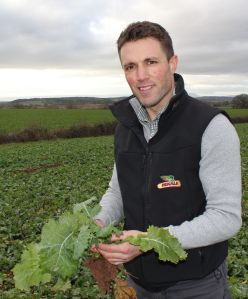
According to Richard Williams, there’s an initial spend with hybrid varieties, but they pay for themselves in other ways.
Growers are reliant on moisture to get OSR seeds to chit, says Richard. “Moisture is king and if it’s too dry, pull out of drilling the crop because it’s often not worth it. And a dry period at the end of August and into September could hamper the crop and allow CSFB to wipe it out. It’s a gamble but being organised and regularly checking weather forecasts for moisture can help. Ultimately, patience is key.”
But well-established earlier drilled crops are more exposed to lodging and yield can be impacted, warns Dick. “I don’t think the yield compromise is often considered when moving to early drilling because getting crops to survive CSFB has taken the focus.”
Other considerations include feeding the crop with a placed phosphorous-based fertiliser and removing volunteers and weeds early to get a good crop established, he says. “Where there’s a high risk of blackgrass, Kerb (propyzamide) is best applied later in the season, so Centurion Max (clethodim) is used for the early blackgrass flush. But broadleaf weeds can be managed effectively with post-emergence herbicides and if you’re confident the crop will survive, you can go in with a comprehensive programme.”
Early drilled OSR is also exposed to phoma and light leaf spot for a longer period, potentially causing larger infections, however, these can be controlled with chemistry, says Dick. “But when it comes to clubroot, if you don’t already have it on farm, early drilling won’t bring it about. But if it’s already present in the soil then earlier drilling will likely cause worse incidences of the disease, so this is where clubroot resistant varieties are important.
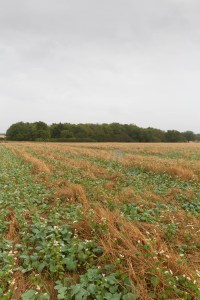
OSR is grown with a companion crop of buckwheat and berseem clover in case of CSFB attacks.
“OSR is investment hungry during the establishment period but because of the risk of crop loss, many don’t want to make the investment.”
Dick warns that occasionally earlier drilled crops can look great in November, so growers decide to spend money on it, and then in February it’s dead. “If we get very advanced crops and then temperatures of -10˚C in February coupled with CSFB larvae, the crop can easily be lost despite caution and investment.”
Agronomically, the best time to drill OSR is in the first week of September, believes Dick. “If you ignore the insects, agronomically – in terms of phoma, light leaf spot, canopy formation, plant standing ability and over wintering – this is the ideal time to drill the crop. But September drilled OSR isn’t immune to pest problems, as we saw last year with rape winter stem weevil infestations, which lay their eggs in September and October,” he adds.
“Understand that whatever you’re doing to avoid CSFB is likely compromising the crop in one way or another – just not as much as the pest itself can,” he adds.
But Richard feels that there are benefits to getting the crop in early, from taking advantage of moisture when it’s available to spreading workload. “Having an established crop gives growers the confidence to invest. However, developing a contingency plan in case of failure is the way to go. OSR has everything against it, but it’s a cracking break crop, it just really requires professional management.”
This article was taken from the latest issue of CPM. Read the article in full here.
For more articles like this, subscribe here.
Sign up for Crop Production Magazine’s FREE e-newsletter here.

